- Administrator
- Albums and Singles
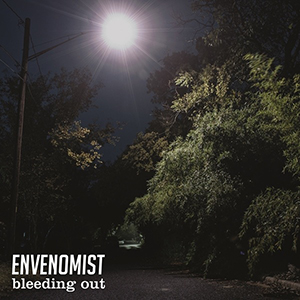 David Reed's newest album as Envenomist may be a collection of six songs, but the presentation and consistency between them seems more akin to a long from composition broken into distinct pieces. His bleak analog synthesizer works have been notable as a recent member of Bloodyminded, and as part of the trio Nightmares with Mark Solotroff and Jonathan Canady, but here he is in sole control. Perhaps due to it being a fully solo excursion or his compositional intent, the arrangement is sparse but strong, and the final product is a bleak synthesizer creep that hints at film score but is an entity entirely unto itself.
David Reed's newest album as Envenomist may be a collection of six songs, but the presentation and consistency between them seems more akin to a long from composition broken into distinct pieces. His bleak analog synthesizer works have been notable as a recent member of Bloodyminded, and as part of the trio Nightmares with Mark Solotroff and Jonathan Canady, but here he is in sole control. Perhaps due to it being a fully solo excursion or his compositional intent, the arrangement is sparse but strong, and the final product is a bleak synthesizer creep that hints at film score but is an entity entirely unto itself.
Dystopian film score is almost too easy of a reference to use, but it does fit the sound of Bleeding Out exceptionally well.A distinctly vintage tinge given the synths he mans is present, but it never takes on that 1970s style cliché sound.Nor is it ever too bombastic or dramatic.Rather than being riddled with abrupt bursts or shocking moments, the sound seethes, always a bit below the surface but clearly conveying menace.In that way it is almost too subtle to be a soundtrack work, but ends up standing on its own.
The opening moments of "Mirrors" set the stage well:a tinny synth first appears from the darkness, slowly surging in volume and taking on more and more force.Reed adds additional layers of electronics to build tension, but drifts out of control in order for Reed to maintain the menacing edge."Equinox" is similarly structured, building from a thin metallic synth noise and richer drone.It is comparably more impressive and has a clearly sinister quality to it, but one that is captivating rather than off-putting.
Reed may keep "Shockwave" an overall more skeletal structure, but he expands greatly from its grinding keyboard foundation.There is a sense of lurk throughout, as synth strings give a tension-building edge to the creepy space he creates.His small electronic accents and icy buzzing keep it from being dull dark ambient bleakness.A heavy sense of synthetic strings comes through on "Two Kings" as well, with the production giving an overall more organic sound to the electronics, which makes for an even darker proposition.Here Reed sticks to the middle and higher register sounds, and the complex layering generates tension perfectly.
Both of the side-ending pieces are more focused on low end sounds, however.A bassy lurch drives the overall hushed "Kraken Mare," staying just far enough in the distance to not overwhelm, but also to keep the tension there and not relenting.Shimmering passages and frigid moments pass through like hints of light in an otherwise overwhelming abyss."The Thaw" is a fitting conclusion to the album both in sound and title.Again Reed keeps the low end throbbing, but the mix more open.The buzzing synth becomes the focus at times, but instead he closes the album on a surprisingly quiet note.
For most of Bleeding Out, David Reed keeps to the same primary synthesizers and largely similar patches on them, giving a clear consistency from one piece to the next.As a nod to his ability as a composer and performer, however, never do the songs too easily run together or sound too similar to one another.Instead the similarity mostly serves to unite the pieces, coming across more like a lengthy single work that captures a variety of sinister moods.That singular consistency serves to make Bleeding Out a continually fascinating album of building tension that never relents, and it is all the stronger for that fact.
samples:
 
Read More
- Creaig Dunton
- Albums and Singles

Why El Paso Sky is the upcoming mixtape on Holodeck by Austin, Texas’ own VVV (Shawhin Izaddoost), serving as a way to whet the appetite for his upcoming full length record later this year. Here we present the premiere of "Talking in the Dark," both in the recent Brainwashed Podcast (Episode 341) and here directly.
Preorder Why El Paso Sky (HD038) by VVV
"Talking in the Dark" is an excellent teaser for what Izaddoost will be delivering on both the tape and his release later in 2017. From its sweeping opening synths that herald the foundation rattling beats and rapid melodic lead that quickly follow, VVV covers an infinitely complex array of sounds and vibes in the span of a few short minutes. With a lush, ambient breakdown that quickly jumps right back into the rhythms, both Izaddoost's prowess in building memorable rhythms and his nuanced, complex approach to production and mixing are clearly at the forefront. Look for the limited mixtape Why El Paso Sky to be released on March 10, 2017 on the Holodeck label, and more new work to follow later this year.
Read More
- Administrator
- Albums and Singles

Recorded January/February 2017 at Unadorned Simplicity, Chicago
Speakers please. Yes it's quiet.
Thank you: Clarice Lispector
More information can be found here.
Read More
- Administrator
- Albums and Singles

Forest is a composer based in Los Angeles, California. His work focuses on deconstruction
of mythologies of sound. He prefers his burgers medium rare, his TV from the year 2000
with a strong female lead, and his reverb tails a little longer than maybe he should. He holds a
master’s in Composition and Music Theory from NYU and currently an engineering position at
Hans Zimmer's Remote Control Productions.
Together with composer/synthesist John Also Bennett, he forms Seabat, an electronic music
outfit with an eight album discography that presented the live score to Green Red in the
Archway Under the Manhattan Bridge and has collaborated in performances with Brusselsbased
composer Christina Vantzou. He is the progenitor of concept projects Eternal Prom
and Tiffany’s Collections, and some of his short film scores can be heard on the 2014 album
Shorts.
Recently he has co-mixed with Alan Meyerson Zimmer’s score for the BBC’s Planet Earth II,
assisted on the mix of the upcoming Kong: Skull Island score by Henry Jackman, and is
currently composing an original score for the upcoming Sri Lankan art-house film House of
My Fathers.
More information can be found here.
Read More
- Administrator
- Albums and Singles

The follow up to Light In The Attic's game-changing I Am The Center box set is finally here. The Microcosm: Visionary Music Of Continental Europe, 1970-1986 is the first major overview of key works from cosmically-taped in artists needing little introduction — Vangelis, Ash Ra Tempel, and Popol Vuh — and unknown masterpieces by criminally overlooked heroes like Bernard Xolotl, Robert Julian Horky and Enno Velthuys.
Whereas I Am The Center called for a reconsideration of an entire maligned genre, The Microcosm requests nothing more than an open mind to consider this ambient, new age, neuzeit, prog, krautrock, cosmic, holistic stuff, whatever one calls it — as a pulsating movement unto itself, a mirror refracting the American new age scene in unexpected, electrifying ways, proving beyond a shadow of a doubt the universality of the timeless quest to express “the Ineffable” through music.
Drawing from major label budgets and homemade cassette distributed circumstances alike, The Microcosm demonstrates a depth of peace profound to behold, and clearly expands the boundaries. Lovingly conceived and lavishly presented by producer Douglas Mcgowan (Yoga Records) and liner notes contributor Jason Patrick Woodbury (Pitchfork, Aquarium Drunkard), The Microcosm features stunning cover paintings by Étienne Trouvelot, and labels by Finnish savant Aleksanda Ionowa.
More information can be found here.
Read More
- Administrator
- Albums and Singles
Locusts and Gegenschein follow up the highly acclaimed Music for Church Cleaners release from Irish artist Áine O’Dwyer. Whilst continuing to explore the church organ as the primary instrument, these two releases steer away from Church Cleaners in both sonic content and themes explored.
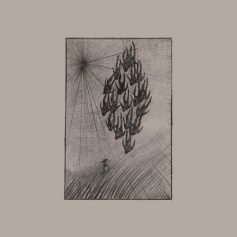
Recorded & performed in 2015 at St James’s Church, Barrow-in-Furness, England & The First Unitarian Congregational Society Church, Brooklyn Heights, New York, Locusts presents itself as a celebration of the pipe organ’s acoustical abilities of tapping into electronic pulses along with O’Dwyer’s liturgical memories which are at times, pushed into horrorthon states.
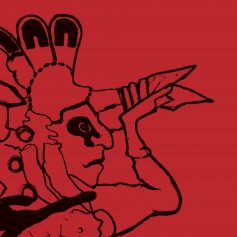
Gegenschein was recorded at the Franciscan Friary in Limerick city. Áine gained access to the Friary in 2012 and explored both pipe organ and space in it’s disused state. What becomes of a sacred space after the dispersion of the spirit, after the light has been switched off, after the deconsecration?
More information can be found here.
Read More
- Administrator
- Albums and Singles

Future music duo Second Woman's sophomore full-length for Spectrum Spools further hones their distinctive fusion of shapeshifting software sculpture and tessellated footwork. Shivering digital textures oscillate with and against algorithmically mapped percussion samples; smeared synthetic chords levitate in the distance; stabs of digital noise punctuate the mix in twitchy, time-distorting patterns. Their anamorphosis verges on ascetic: stark, splintered waveforms rendered into unique fiber optic hieroglyphs.
Multi-instrumentalists Josh Eustis and Turk Dietrich share a deep history going back to their days in the New Orleans ambient electronic community, as part of Telefon Tel Aviv and Belong, respectively. Even so, S/W pushes beyond their combined discographies to date, flexing impossibilities, building rhythms from arrhythmia, teasing veiled emotion from bold iterations of cold code.
More information can be found here.
Read More
- Administrator
- Albums and Singles

Editions Mego is proud to present the latest opus from legendary British composer, actor, sound designer and all round fine human Simon Fisher Turner. Giraffe is a new major work which blurs the lines between sound design and song, machine severity and narrative sentimentality. Subtitled "living in sounds and music" Giraffe take the listener through a vast journey where an abstract clacking of unknown origin rubs up against a melancholic electronic sequence. "Life sounds" were captured with a portable hard disc recorder and i-phone and appear alongside contemporar sound design. Emma Smith provides the narrative on "Slight Smile," whilst electronic machines grind amongst background industrial klang in "Mud Larks." "Save As" revolves around a beautiful simple piano motif which soon folds into an unnerving field recording and drone combination.
Giraffe is a document of interior and exterior duality. A living space where machines and the surrounding world collide, a sonic landscape where musical and nonmusical elements are placed on an level hierarchy. The alchemy of these constituent parts results in the magic of Giraffe, one where the symbiotic sequence of events highlights a unique approach to sound as rapturous matter in whatever form it takes.
More information can be found here.
Read More
- Administrator
- Albums and Singles
Let us explore new modes of music making. Let us take the intensity of the studio session and drop it into the home. If the "avant-garde" is thought to be un-domestic then what impact does this domestic situation have on the shape and sound of our project? Can the radical even exist inside the domestic? It's so private in the home. How vulnerable are we? Are the shades down and the curtains drawn? Can we become out of order? A rug turned at a slight angle, resisting not to straighten it as you pass by. The merger of soft and dark sides, melodic voices and angular jabs, organic and pre-programmed, dinner parties and carry out. A dislocated and disjointed dance. "Deviation of the logical function from it's usual pattern" - André Breton The "Detroit House Guests" project concept was conceived in the early 2000s and became a reality in 2014 after receiving a John S. and James L. Knight Foundation grant. The project was based on the "visual" artist residency model but for musicians. Each musician would come for up to a 3 week period with the parameter that we live, work, and collaborate together. The results - a total anthropological sound experiment and a full length album. ADULT. is the Detroit duo Nicola Kuperus and Adam Lee Miller. They played their first live show together in Germany in 1997 under the name Artificial Material. In early '98 they released their first 12" under the moniker Plasma Co. Later that year, they released their first 12" under the name ADULT. Currently, they have released six albums and 19 EPs or singles on Ghostly International, Thrill Jockey, Clone Records as well as on their own label Ersatz Audio, (which currently has over 40 releases since it was founded in '95) They have remixed over 20 acts as well, including Tuxedomoon, John Foxx, Death in Vegas and Pet Shop Boys (for Moog Music). Kuperus and Miller also make sculpture, paintings, films, photographs, performances, videos and installations. They strive to intersect the lines between art and audio. They have exhibited their work at institutions such as the Austrian Cultural Forum (NY), Mattress Factory (Pittsburgh), Detroit Institute of Arts (Detroit), MOMAS (Saitama, Japan), and Centre d'art contemporain de Meymac (FR). They have shown their film The Three Grace(s) triptych at places such as Anthology Film Archives (NY), Distrital Film Festival (Mexico City), and Grey Area for Art and Technology (SF).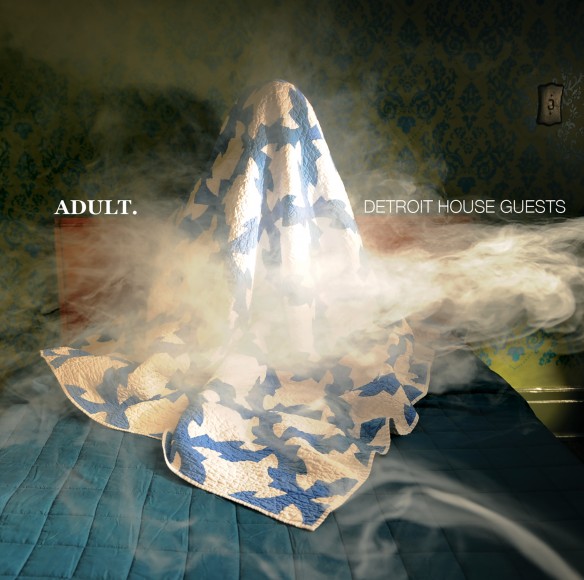
Detroit House Guests features collaborations from Douglas J McCarthy, founding member of Nitzer Ebb, solo artist and one half of Fixmer/McCarthy; Michael Gira from Swans / Angels of Light, Shannon Funchess from US duo Light Asylum; Robert Aiki Aubrey Lowe aka Lichens, Austrian thereminist Dorit Chrysler and multidisciplinary artist Lun*na Menoh.
Read More
- Administrator
- Albums and Singles
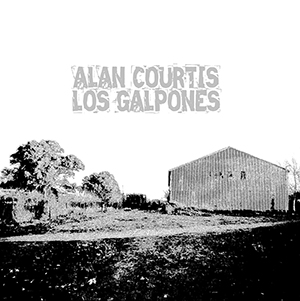 Alan Courtis (aka Anla Courtis) is one of those composers that at times is occasionally too prolific, spreading himself thin over numerous collaborations and solo works each year. Because of that, his work is sometimes less focused than it could be, simply due to the extreme breadth of what he puts out. However, when one of his releases is obviously a fully realized concept, his work is usually exceptionally compelling.  Los Galpones (The Sheds) is one of his more targeted works, by that standard. A record built upon mostly just guitar and metallic objects, it is a wonderfully unified suite of four distinct pieces that work together perfectly and creates a nuanced sense of post-industrial decay.
Alan Courtis (aka Anla Courtis) is one of those composers that at times is occasionally too prolific, spreading himself thin over numerous collaborations and solo works each year. Because of that, his work is sometimes less focused than it could be, simply due to the extreme breadth of what he puts out. However, when one of his releases is obviously a fully realized concept, his work is usually exceptionally compelling.  Los Galpones (The Sheds) is one of his more targeted works, by that standard. A record built upon mostly just guitar and metallic objects, it is a wonderfully unified suite of four distinct pieces that work together perfectly and creates a nuanced sense of post-industrial decay.
Each side of Los Galpones consists of two pieces, one shorter and one longer.In these, Courtis coaxes pained sounds from his guitar, with rhythmic elements from springs and other found objects, into a bleak din of industrial (in the physical sense) dissonance."Hombrear" is all deep and bassy hollow expanses, with electronic sounds slowly bubbling up from the tarpit like foundation below.Heavy echoes mix with the electronics, building slowly and becoming more and more imposing.By the end, there is a strong rhythmic structure to it, nicely composed, with abrasive, violent bowed violin strings cutting through like a rusty blade.The shorter companion "Aparcero" is comparably sparser, with what sounds like scraped guitar strings and other less identifiable processed outbursts.By the end of its relatively short duration, it is a disorienting mess of whipping panned noises that are anything but monotonous.
On the other side, "Estiba" begins as a heavy bass murk, with a far off guitar clang slowly introduced into the mix.For the whole performance Courtis works on top of an insistent rhythmic throb, with the entirety being noisy yet structured.Some whistle blowing like noises pop up here and there to keep everything abrasive, but the guitar nicely contrasts by becoming more and more musical.Even with the violently grinding harsh bits that appear towards the end, the overall feel is more depressive rather than aggressive, and the song concludes in a great, erratic disintegration of noise and melody.
The shorter accompaniment "Corralon" is largely pleasantly strummed guitar compared to the dissonance before.Rather than the heavy processing and effects before, it is essentially just echoed and delayed, creating a more expansive sound from a rather simple source.Courtis layers these sounds expertly, mixing in percussion and subtle treatments to create a thick, rich expanse of drones that is far more than the sum of its parts.Compared to what preceded it the feel is more sad and mournful than overly depressive, ending the album on an especially beautiful note.
Los Galpones is a high point in Alan Courtis' expansive, ever-growing catalog.There is a bleak darkness, like a sense of urban decay to be heard throughout the album that he captures through the instrumentation and his guitar playing.It never comes across as forced or overly on the nose, though.Instead the performance and production captures this sensibility in a solely audio form.Make no mistake:Los Galpones is bleak and anything but uplifting in sound, but it is a bleakness achieved so adeptly that it takes on a distinct beauty all its own.
samples:
 
Read More
- Administrator
- Albums and Singles
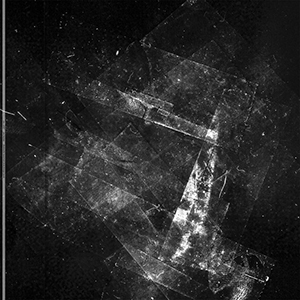 For his two most recent (near simultaneous) releases, Jim Haynes has scaled back his audial representation of decay to something a bit colder and more intentionally off-putting. Both albums are largely based on field recordings taken from a residency in Estonia, and capturing the detritus of Soviet era electronics (and some still active) via shortwave and then processing the results. The final products may be somewhat sparser than his other works, but no less fascinating, and with an additional menacing edge.
For his two most recent (near simultaneous) releases, Jim Haynes has scaled back his audial representation of decay to something a bit colder and more intentionally off-putting. Both albums are largely based on field recordings taken from a residency in Estonia, and capturing the detritus of Soviet era electronics (and some still active) via shortwave and then processing the results. The final products may be somewhat sparser than his other works, but no less fascinating, and with an additional menacing edge.
On the first side of the Flammable Materials record, Haynes presents three pieces that are perhaps the most inline with his previous works.Treated static and radio interference is unsurprisingly a recurring theme of the record, but are especially prevalent on the opening piece "Of Blast and Bleach".Here Haynes mixes it with some sort of idling motor sound that is fittingly inconsistent.Elements of the static and noise are shaped into some sort of rhythmic structure that contrasts the abstract remainder of the composition very effectively.
Haynes takes on a more noise-centric approach on "Nyet".First a lava-like wall of harshness with the occasional tone slipping through, it is quickly broken back down and built back up, with an emphasis on shifting filters obscuring the low register part of the spectrum.For "E. Kohver" he takes on the opposite approach to the structure and arrangement.This piece is mostly a heavy, imposing drone with metallic tinged machinery noises that never goes full on dissonant, but stays sinister.At times the shortwave static is molded into that crackling texture-like sound that Haynes does so well, but the whole piece is very menacing and dynamic.
The other side of the album is dedicated to a single piece, "Electric Speech:Nadiya".A bit over 20 minutes, the composition is based solely on the radio broadcast of a woman speaking.Of course Haynes also makes use of the static and noise inherent to this type of recording, but in general he embraces minimalism more.The source material voice appears frequently, cut into fragments and phonemes that are anything but identifiable words, regardless of the language being spoken.As a whole it is a different style he is working in, with that singular focus and an impressive use of silence to contrast the more commanding moments.
samples:
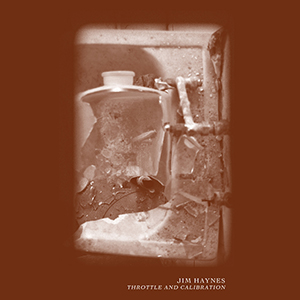
Throttle and Calibration is from the same residency, and makes use of the Active Crossover series of audio archives by Simon Whetham in addition to Haynes’ own field recordings.Beyond just the sound from shortwave radios, these six pieces also utilize environments captured from shipping containers, decaying water towers, frigid winds, and other remnants of Cold War era decay.Since its conceptual focus is a bit broader, it is not surprising then that the sound is more reminiscent of his other recent releases."With Lead" is at first all dramatic crashes and weirdly wet sounding organic noises that are disturbing in their ambiguity before transitioning to a more understated rumble.
"Radiesthesia" is at first a foghorn like tone and abrasive mid-range distortion, but collapses again, interrupted with louder moments and backward voices to create a ominous ambience that is simultaneously disturbing and haunting, but is in league with what I have expected from his work.Haynes' standard practice of creating rot and decay is also on full display for "It Burns", which is a mass of abrupt noise blasts and violent crashes that becomes thinner and more brittle with time.
"Kirikulau" is a bit of a departure for him, however.The sound is more focused on lighter, ringing sounds and surging, unpleasant noises.It is not as dynamic as usual, but his balance of sustained tone and noisy outbursts is structurally reminiscent of Hermann Nitsch's compositions, with a more pronounced sense of rust and decay."What Do You Mean By That?" also stands out as more haunting and feedback-centric, with an overall seasick wobble to it, even though there is an unsettling sense of calm.Haynes adds layers and layers of distortion and noise throughout, pulling back to leave some open space and occasionally punctuating things with a metallic clang or thunderous rumble.
Both of Jim Haynes' newest works are exceptional additions to his already impressive body of work.The Throttle and Calibration tape is probably the less adventurous of the two, but is still a work deeply embedded in his style without being any sort of retread or replication of material he has already done.Flammable Materials from Foreign Lands benefits from its unique conceptual direction and focus, but really neither one is better than the other, and both are just excellent works from someone who has done an admirable job developing a career of sound art that always stands strong as utterly unique and fascinating.
samples:
Read More

